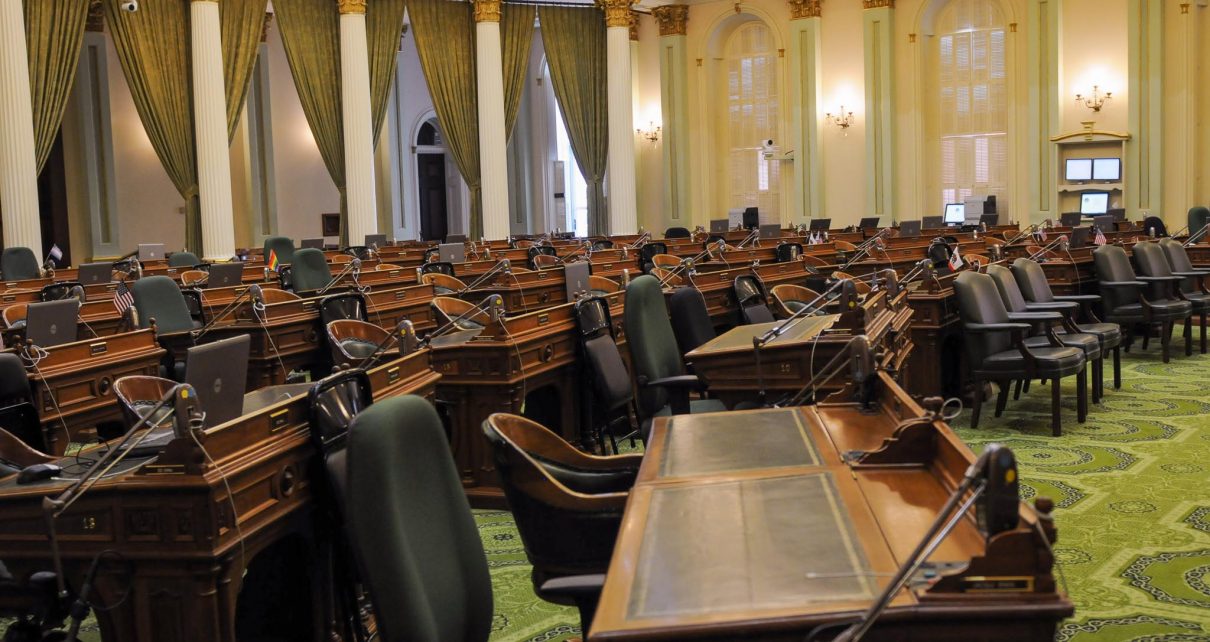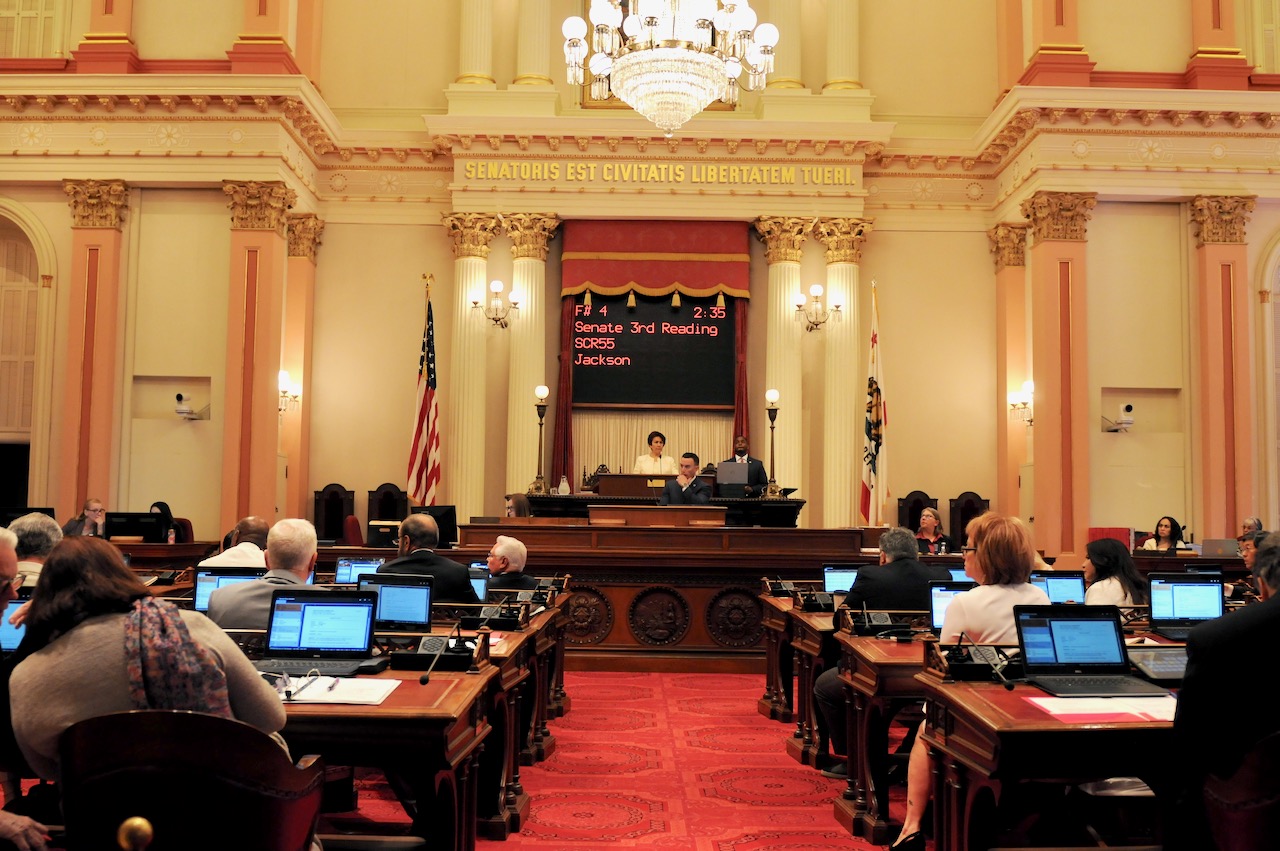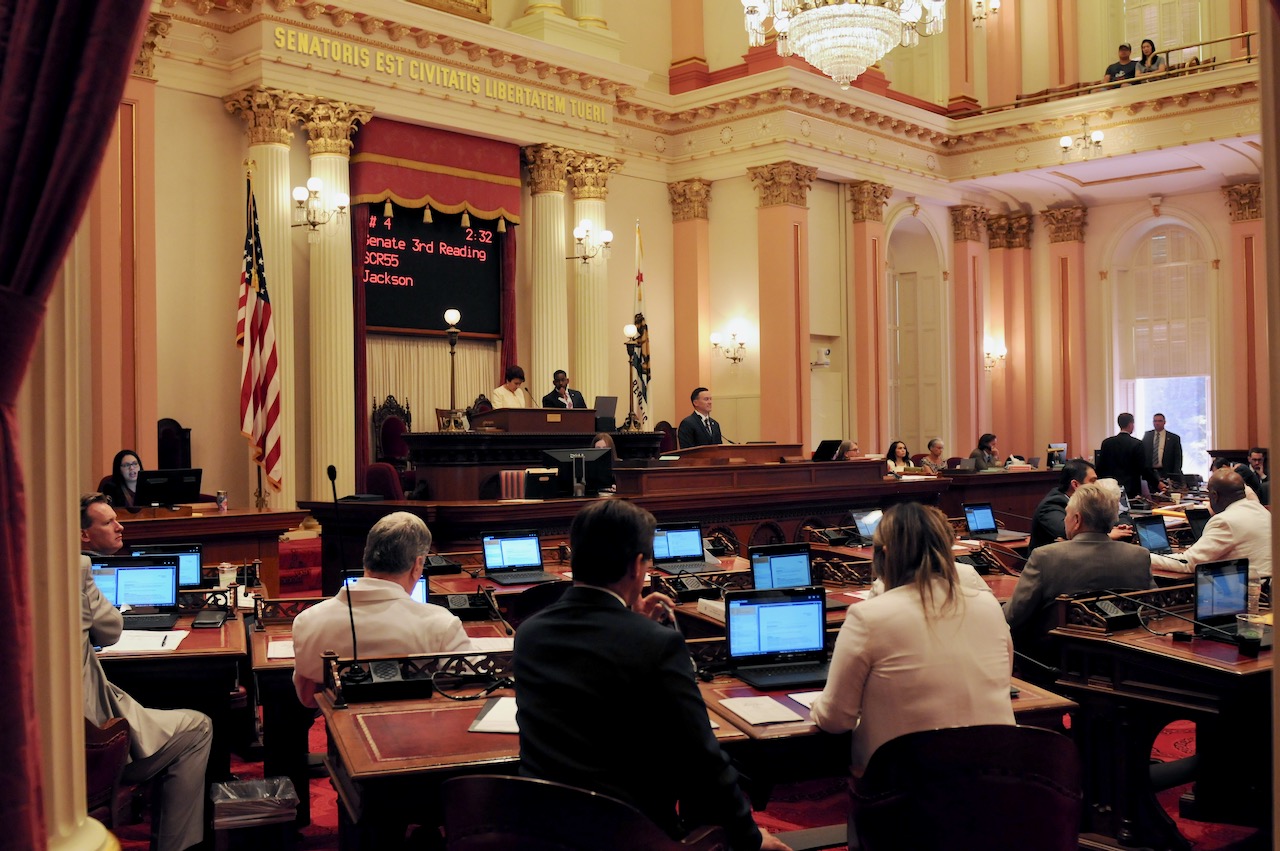
California State Assembly. (Photo: Kevin Sanders for California Globe)
What Bill Drafting Guidance Do We Have from the California Legislature’s Joint Rules?
There are several sources of guidance in drafting bills
By Chris Micheli, September 26, 2022 7:18 pm
When drafting legislation in California, there are several sources of guidance in drafting bills and other forms of legislation (resolutions and constitutional amendments). The third source is the Joint Rules of the Assembly and Senate. What legislation drafting guidance is contained in the Joint Rules?
Concurrent and Joint Resolutions
Joint Rule 5 provides: “Concurrent resolutions relate to matters to be treated by both houses of the Legislature. Joint resolutions relate to matters connected with the federal government.”
This legislative rule instructs the bill drafter to choose the correct resolution depending on what its purpose is. Note there are also “house resolutions” which are only adopted by either the Senate or Assembly, but not both houses. Concurrent and joint resolutions are adopted by both houses. No resolutions are acted upon by the Governor.
Title of Bill
Joint Rule 7 provides: “The title of every bill introduced shall convey an accurate idea of the contents of the bill and shall indicate the scope of the act and the object to be accomplished. In amending a code section, the mere reference to the section by number is not deemed sufficient.”
This legislative rule instructs the bill drafter to include a title with every bill (as the state Constitution also requires), and the parameters to be met in drafting the bill’s title. This rule also provides guidance to make clear that an existing statute has to actually be amended, rather than a bill just referencing the code section to be amended.
Division of Bill into Sections
Joint Rule 8 provides: “A bill amending more than one section of an existing law shall contain a separate section for each section amended. Bills that are not amendatory of existing laws shall be divided into short sections, where this can be done without destroying the sense of any particular section, to the end that future amendments may be made without the necessity of setting forth and repeating sections of unnecessary length.”
This legislative rule instructs the bill drafter to include individual bill sections for each code section that is amended by the bill. This rule also provides guidance that, when adding new sections of code, the bill drafter should use short (in length) sections, such as a few sentences per each code section.
Digest of Bills Introduced
Joint Rule 8.5 provides: “A bill may not be introduced unless it is contained in a cover attached by the Legislative Counsel and it is accompanied by a digest, prepared and attached to the bill by the Legislative Counsel, showing the changes in the existing law that are proposed by the bill. A bill may not be printed where the body of the bill or the Legislative Counsel’s Digest has been altered, unless the alteration has been approved by the Legislative Counsel. If any bill is presented to the Secretary of the Senate or the Chief Clerk of the Assembly for introduction that does not comply with the foregoing requirements of this rule, the Secretary or the Chief Clerk shall return it to the Member who presented it. The digest shall be printed on the bill as introduced, commencing on the first page thereof.”
This legislative rule instructs the bill drafter to include a bill “jacket” as a cover to the bill language, as well as the Legislative Counsel’s Digest explaining existing law and what the bill proposes to do, prior to introduction of the bill. In addition, the Digest has to be on the first page of the introduced bill.
Digest of Bills Amended
Joint Rule 8.6 provides: “Whenever a bill is amended in either house, the Secretary of the Senate or the Chief Clerk of the Assembly, as the case may be, shall request the Legislative Counsel to prepare an amended digest and cause it to be printed on the first page of the bill as amended. The digest shall be amended to show changes in the existing law that are proposed by the bill as amended, with any material changes in the digest indicated by the use of appropriate type.”
This legislative rule instructs the bill drafter to review and possibly edit the Legislative Counsel’s Digest after a bill has been amended. This rule also provides guidance that the existing law section, as well as the explanation of what the bill proposes to do, may have to be modified in the Digest after a bill has been substantively amended, depending upon the extent of the amendments to the bill.
Errors in Digest
Joint Rule 8.7 provides: “If a material error in a printed digest referred to in Rule 8.5 or 8.6 is brought to the attention of the Legislative Counsel, the Legislative Counsel shall prepare a corrected digest that shows the changes made in the digest as provided in Rule 10 for amendments to bills. The Legislative Counsel shall deliver the corrected digest to the Secretary of the Senate or the Chief Clerk of the Assembly, as the case may be. If the correction so warrants in the opinion of the President pro Tempore of the Senate or the Speaker of the Assembly, a corrected print of the bill as introduced shall be ordered with the corrected digest printed thereon.”
This legislative rule instructs the bill drafter to correct any “material errors” in the Legislative Counsel’s Digest in either the introduced or amended form of a bill.
Restrictions as to Amendments
Joint Rule 9 provides: “A substitute or amendment must relate to the same subject as the original bill, constitutional amendment, or resolution under consideration. An amendment is not in order when all that would be done to the bill is the addition of a coauthor or coauthors, unless the Committee on Rules of the house in which the amendment is to be offered grants prior approval.”
This legislative rule instructs the bill drafter to ensure that the language of an amendment or substitute for the bill being amended is germane (i.e., be the same subject matter as the original bill). This rule also provides guidance that the bill drafter cannot amend a bill to merely add a coauthor unless the respective Rules Committee has given its permission for that amendment.
Changes in Existing Law to be Marked by Author
Joint Rule 10 provides: “In a bill amending or repealing a code section or a general law, any new matter shall be underlined, and any matter to be omitted shall be in type bearing a horizontal line through the center and commonly known as “strikeout” type. When printed the new matter shall be printed in italics, and the matter to be omitted shall be printed in “strikeout” type. In an amendment to a bill that sets out for the first time a section being amended or repealed, any new matter to be added and any matter to be omitted shall be indicated by the author and shall be printed in the same manner as though the section as amended or repealed was a part of the original bill and was being printed for the first time. When an entire code is repealed as part of a codification or recodification, or when an entire title, part, division, chapter, or article of a code is repealed, the sections comprising the code, title, part, division, chapter, or article shall not be set forth in the bill or amendment in strikeout type.”
This legislative rule instructs the bill drafter to underline any new statutory language and to use strikeout for any repealed statutory language. This rule also provides guidance that, when an entire title, part, division, chapter, or article is repealed, then those repealed provisions do not need to be set forth in the bill.
Rereferral to Fiscal Committee
Joint Rule 10.5 provides: “A bill shall be rereferred to the fiscal committee of each house when it would do any of the following:
(1) Appropriate money.
(2) Result in a substantial expenditure of state money.
(3) Result in a substantial increase or loss of revenue to the state.
(4) Result in substantial reduction of expenditures of state money by reducing, transferring, or eliminating any existing responsibilities of any state agency, program, or function.
Concurrent and joint resolutions shall be rereferred to the fiscal committee of each house when they contemplate any action that would involve any of the following:
(1) Any substantial expenditure of state money.
(2) Any substantial loss of revenue to the state.
The above requirements do not apply to bills or concurrent resolutions that contemplate the expenditure or allocation of operating funds. This rule may be suspended in either house as to any particular bill by approval of the Committee on Rules of the house and two-thirds vote of the membership of the house.”
This legislative rule instructs the bill drafter to consider four factors to determine whether to key the bill as “fiscal committee: yes” in the Digest Keys.
Short Title
Joint Rule 10.6 provides: “A bill may not add a short title that names a current or former Member of the Legislature.”
This legislative rule instructs the bill drafter to not include the name of a current or former legislator as part of the title of a bill.
Heading of Bills
Joint Rule 10.7 provides: “A bill or resolution may be authored only by a Member or committee of the house of origin, unless written approval for a Member or committee not of the house of origin to be a joint author is received from the President pro Tempore of the Senate and the Speaker of the Assembly and provided to the Secretary of the Senate and the Chief Clerk of the Assembly, as appropriate, provided that a Member or committee not of the house of origin may not be a lead author. Members or committees that are not of the house of origin may be “principal coauthors” or “coauthors.” A bill may not indicate in its heading or elsewhere that it was introduced at the request of a state agency or officer or any other person. A bill may not contain the words “By request” or words of similar import.”
This legislative rule instructs the bill drafter to only include a legislator as the lead author from the respective house in which the bill is introduced. The drafter can include a legislator from the other house if the requisite approvals have been received. This rule also provides guidance that the drafter not include any language that the bill was requested to be introduced by anyone or any entity.
Resolutions Prepared by Legislative Counsel
Joint Rule 34.1 provides: “Whenever the Legislative Counsel has been requested to draft a resolution commemorating or taking note of any event, or a resolution congratulating or expressing sympathy toward any person, and subsequently receives a similar request from another Member of the Legislature, the Legislative Counsel shall inform that requester and each subsequent requester that a resolution is being, or has been, prepared, and shall inform them of the name of the Member for whom the resolution was, or is being, prepared.”
This legislative rule instructs the bill drafter to inform any other legislators who request the same or similar resolution to be drafted.
Identical Drafting Requests
Joint Rule 34.5 provides: “Whenever it comes to the attention of the Legislative Counsel that a Member has requested the drafting of a bill that will be substantially identical to one already introduced, the Legislative Counsel shall inform the Member of that fact.”
This legislative rule instructs the bill drafter to inform a legislator of a similar or the same bill already having been introduced that year.
- Bonds and Undertakings in California - December 21, 2025
- Pleadings in Eminent Domain Cases - December 20, 2025
- Complaint Resolution in Child Support - December 20, 2025





3 thoughts on “What Bill Drafting Guidance Do We Have from the California Legislature’s Joint Rules?”